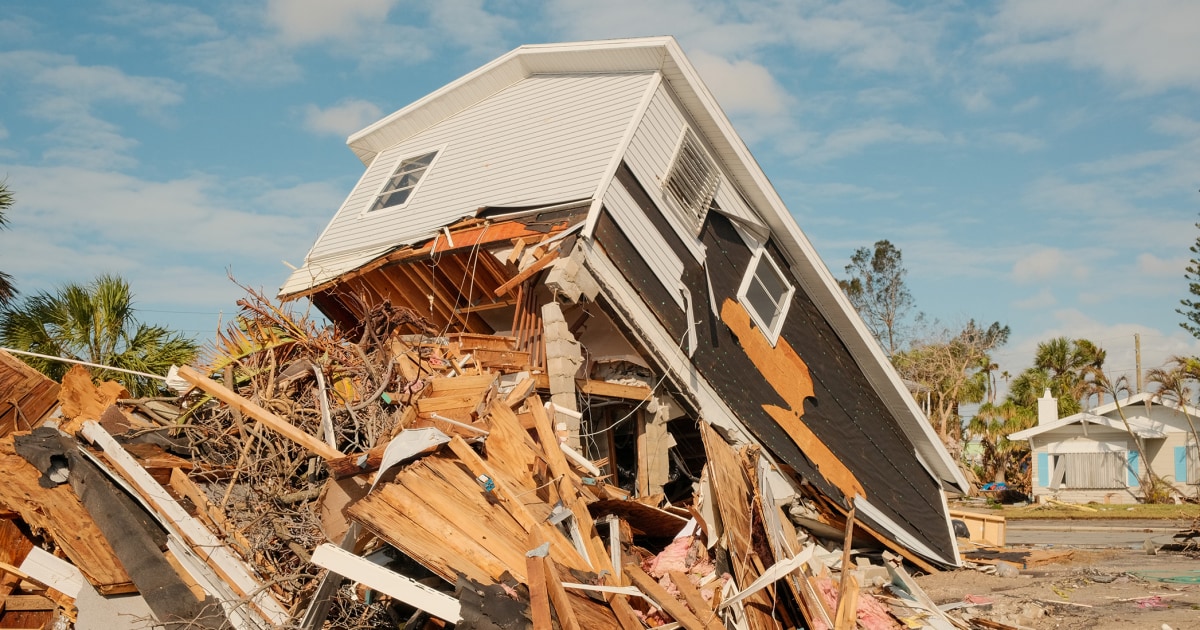The Summary
- FEMA and NOAA have become politicized as the frequency and severity of natural disasters have increased. Their futures hang in the balance of the election.
- Project 2025, a conservative policy road map, recommends that NOAA be “broken up and downsized” and that much of the burden for disaster recovery be shifted away from FEMA.
- Experts and current and former agency officials said such changes could leave the U.S. more vulnerable to extreme weather.
With the neck-and-neck 2024 election just days away, the futures of the federal agencies responsible for weather forecasting, climate change research and disaster recovery hang in the balance.
Those agencies, namely the National Oceanic and Atmospheric Administration (NOAA) and the Federal Emergency Management Agency (FEMA), have become increasingly politicized in recent years despite the offices’ history of remaining above the fray. But with natural disasters fueled by climate change now regularly slamming the U.S. — this year has already seen 24 weather events that each caused at least $1 billion in damage — the agencies have taken on a greater role. And with it, they’ve become a target for some conservatives who are skeptical of climate change and want to slash government budgets.
Republican presidential candidate Donald Trump has promised deep cuts to federal budgets, and Elon Musk, one of his most vocal surrogates, said last week that he would cut at least $2 trillion from the budget if he served in a second Trump administration. Project 2025, a 922-page conservative policy road map put together by the Heritage Foundation, a right-leaning think tank, recommends that NOAA be “broken up and downsized” and takes aim at FEMA, suggesting that much of the financial burden for disaster recovery be shifted to state and local governments.
That could dramatically change what disaster relief looks like in the United States.
“It almost becomes unthinkable that states would ever be able to recover without long, costly recovery periods that would come out of state and local budgets,” said Craig Fugate, who served as FEMA’s administrator under the Obama administration.
It’s not entirely clear what a second Trump administration would mean for FEMA or NOAA. Trump has publicly distanced himself from Project 2025, even though many of its authors were advisers of his. Trump campaign officials told NBC News in emails that “Project 2025 has NOTHING to do with President Trump or his campaign” and that only the president “and not any other organization or former staff represent policies for the second term.” The campaign did not respond to follow-up questions about its plans for NOAA and FEMA.
FEMA has already become the target of scrutiny and criticism from some Republican leaders in the aftermath of Hurricanes Helene and Milton. Trump and several other prominent Republicans went as far as pushing false claims about FEMA money going to immigrants in the U.S. illegally. At the same time, rampant misinformation about the two storms led meteorologists to become the target of threats despite the remarkable accuracy of their forecasts.
Those forecasts might cease to be freely available to the public or state governments if Project 2025’s recommendations are implemented, as NOAA oversees the National Weather Service.
In interviews, academic experts and current and former agency officials said that even an agenda partially informed by the conservative road map could leave the U.S. more vulnerable to extreme weather, in a world in which major disasters have already become more intense and frequent.
Currently, FEMA aid covers at least 75% of the cost of major disasters, but Project 2025’s proposals would reduce that share to as little as 25%.
Rep. Jared Moskowitz, D-Fla., who served as Florida’s Director of Emergency Management under Gov. Ron DeSantis from 2019 to 2021, said that limiting relief aid could turn some communities into ghost towns. He pointed to Hurricane Michael, which hit Florida in 2018 as a Category 5 storm.
“Those areas would not have recovered but for the fact that the federal government came in and paid for the response and for the recovery efforts,” Moskowitz said.
The hardest-hit areas that benefited most from the federal aid, he added, “voted for Donald Trump, voted for Rick Scott, voted for Ron DeSantis.”
Since hurricanes Helene and Milton, the federal government has approved more than $1.2 billion in aid for recovery efforts, according to FEMA. That includes more than $185 million in assistance for 116,000 North Carolina households and over $413 million for more than 125,000 households in Florida, where both storms made landfall.
If Project 2025’s proposals had been in place during Helene, Fugate said, they would likely have resulted in “more loss of life, much slower response and very little financial assistance to help communities recover.”
Project 2025 recommends that NOAA be “dismantled and many of its functions eliminated, sent to other agencies, privatized, or placed under the control of states and territories.”
Matthew Sanders, the acting deputy director of the Environmental Law Clinic at Stanford University, said that privatizing weather forecasting could lead companies’ profits to be valued over providing a robust public service, which could compromise the quality of forecasts.
“There is an important role for a neutral, centralized government agency to play that private companies cannot or will not play in this space,” Sanders said.
Matthew Burgess, an assistant professor in the College of Business at the University of Wyoming, said privatizing weather forecasting could also create situations in which state or local governments with more resources get access to better quality forecasts, while those with fewer means get left in the dark. Or, he said, a region at higher risk for hurricanes or tornadoes could be forced to pay more for those forecasts.
“Right now Florida gets their hurricane forecasts from the federal government for free,” Burgess said. “If we privatize that, the private sector probably does operate more efficiently, on average, but is that going to be offset by an incentive to price gouge? Because basically, when you’re about to have a hurricane, you really need that forecast, and you’re going to pay whatever they charge.”
In a statement, the Heritage Foundation said: “Project 2025 does not call for the elimination of NOAA or the NWS. The claim is false and ridiculous.”
“There’s a distinction between privatization and commercialization,” the statement added. “Using commercial products to provide a better result for taxpayers at a lower cost is nothing new.”
Beyond its proposals for particular agencies, Project 2025 also calls for the disbanding of federal climate change research. But understanding climate change’s effects is an integral part of forecasting, particularly for storms, since warmer oceans are driving more rapid intensification of hurricanes and a warmer atmosphere makes them capable of dumping more rain.
“That’s why everybody gets up each and every day to come in here and do their research so that people are better prepared … to make decisions that are critical for them and their families,” said DeNa Carlis, director of NOAA’s National Severe Storms Laboratory.
Ending climate research would leave the U.S. more vulnerable to its consequences, Fugate said.
“Just because you don’t like the answer doesn’t mean the information isn’t important,” he said. “How do we prepare ourselves if we ignore what is coming?”
Amid the growing lack of faith in government institutions, Sanders said, major cuts to research or to weather or disaster agencies could further erode trust.
“Climate change is a very unique problem in that, like most environmental problems, it doesn’t respect our political boundaries and it doesn’t respect our state boundaries,” he said. “We need centralized federal agencies to respond to climate change, agencies that can handle big, significant, multistate disasters at the appropriate scale.”






